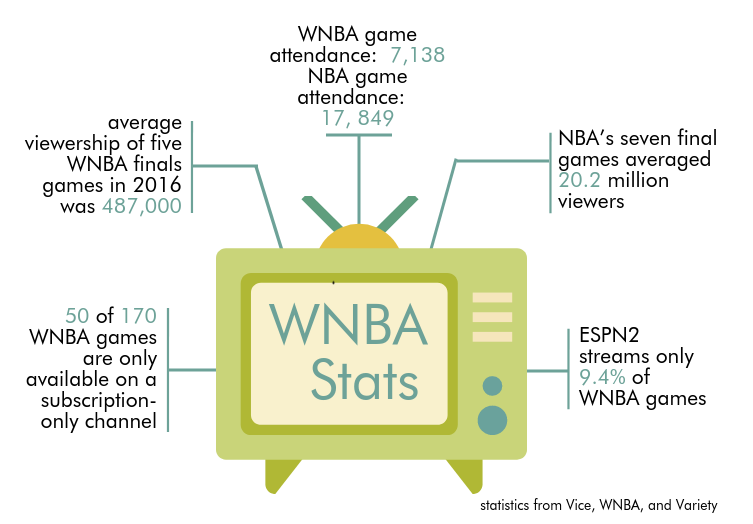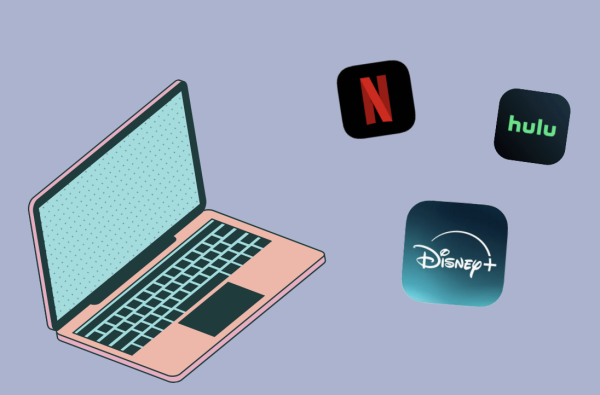Give the WNBA the recognition it deserves
October 30, 2017
I lean forward on my couch, my heart pounding and my stomach in my throat, as the the L.A. Sparks face the Minnesota Lynx in Game 5 of the Women’s National Basketball Association finals Oct. 4. As Lynx forward Maya Moore hits a floater from the middle of the paint to put her team up by nine, tears start to form in my eyes. I’m in awe of these strong, powerful women and their impending victory.
Watching the raw triumphant emotions and success of women I’ve supported for three seasons moved me; it not only made me happy for the Lynx but also fueled my excitement for my own basketball season.
This joy is familiar to any dedicated sports fan. Still, my thrill dulled when I realized I was relatively alone in my WNBA-induced happiness. Only a few girls on my basketball team knew why I was wearing my Lynx t-shirt to school the next day, and only my coach and my father asked me what I thought of the game.
This issue is bigger than just my personal experiences. Society in general writes off women’s sports too easily, even after almost half a century since the 1972 passage of Title IX.
The WNBA isn’t just a “lesser” version of the NBA; though there are noticeable differences, including a slightly more team-focused game with less emphasis on individual strength, these women play at an extremely high level, committing as much time as NBA players do to their game, all while receiving very little credit for their work.
The average viewership of the five WNBA finals games in 2016 was 487,000, while the NBA’s seven final games’ averaged 20.2 million viewers, Variety reported.
This small showing is mainly due to the general public’s disinterest in women’s sports, which leads to limited advertising and limited coverage. Of the 170 games in the WNBA season, ESPN2 only streams 16, and 50 other games are only accessible on the subscription-only NBATV channel, the WNBA’s official website reports. That’s a mere 9.4 percent of games nationally televised. To be sure I can watch any given WNBA game, I have to buy the $16 league pass each year to watch on my phone or computer.
People shouldn’t need to go out of their way to find professional women’s sports.
ESPN and other networks need to show more women’s sports games to attract more viewers, and, eventually, more advertisers, to remedy economic struggles that prevent WNBA players from being household names the way NBA players are.
In fact, as long as the WNBA has less coverage and fewer advertisers than the NBA, female players will continue to receive far less pay than their NBA counterparts. Forbes reported that Sylvia Fowles of the Minnesota Lynx, MVP of the 2017 WNBA season, was paid $109,000 this year, while the NBA’s minimum salary is more than five times that.
Nine percent of WNBA games televised is far too few for a league full of such amazingly dedicated, talented and inspirational women. Any little girl—including my nine-year-old sister who loves basketball—should be able to turn on any TV and see strong, powerful women playing the game they love.
Women’s sports should get the credit they deserve.










Lauren • May 2, 2022 at 3:15 pm
Thank you for writing this!! And ignore the haters in the comments. Great analysis 🙂
مثلي الجنس نيغا الجنس • Jan 21, 2021 at 1:12 pm
Lol, that’s cap, WNBA is just less boring. Comparing NBA to WNBA, the NBA has a 92.3% attendance to WNBA’s 7.7%. Even more interesting, WNBA has a 22.2% media coverage rate to the NBA’s 77.8% media coverage rate. That said, your basketball league is getting nearly 3 times as much media coverage then it should be when looking at attendance. Applying your logic, players in my high school basketball team should be paid at least 35k. This is some Marxist tomfoolery that won’t work, advertisers get money from the things they report on, and they don’t make a lot if what they report is boring. I’d rather go through multiple sex changes than watch WNBA.
et • Dec 3, 2017 at 3:26 pm
Not sexism. Men’s sport is simply more entertaining and talent-laden.
Snatched • Nov 27, 2017 at 9:22 pm
I don’t think WNBA players are receiving less credit. I just think people view them as being less entertaining than the NBA which subjectively is true. There is more aggression in the NBA, and quite frankly higher level talent in the NBA. It’s not that WNBA players aren’t getting credit and the reason that they arent on TV is because there is low demand for it. Even most women prefer to watch NBA over the WNBA not because it is far more entertaining. It’s not a matter of sexism or anything.